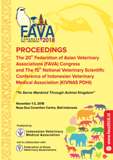PF-17 The Development of Crude Testicular Cells in In Vitro Culture
Abstract
Spermatogenesis is a continuous process in which spermatogonial stem cells (SSC) develop into specific germ cells before terminally differentiating to form spermatozoa. The process is supported by Sertoli cells, which are in close contact with germ cells in the seminiferous tubules. Sertoli cells provide essential hormonal signals, nutrients, and physical support to germ cells for successful spermatogenesis.
The crude testicular cells (CTC) contains many cell types, like Sertoli cell, Leydig cell, spermatogonial stem cell (SSC), spermatocyte and other testicular somatic cells (Shah et all. 2016). Testicular cells are believed to secrete various growth factors that induced the spermatogenesis process. The spermatogonial stem cells are unique population of cells in the male testis, which dual function. First self-renewing their population to maintain the number of stem cells, secondary function is differentiating into spermatids in testis (Wang et al. 2015).
Spermatogenic cells differentiation needed the similar microenvironment in vivo spermatogenesis. The essential nutrients was collected from healty culture and the culture contained mixed population of cells both the somatic cells and spermatogenic cells. To identification the spermatogenic cells using Periodic Acid Schifft (PAS) staining (Chang et al. 2011). The present study examined the development of crude testicular cells using PAS staining.

